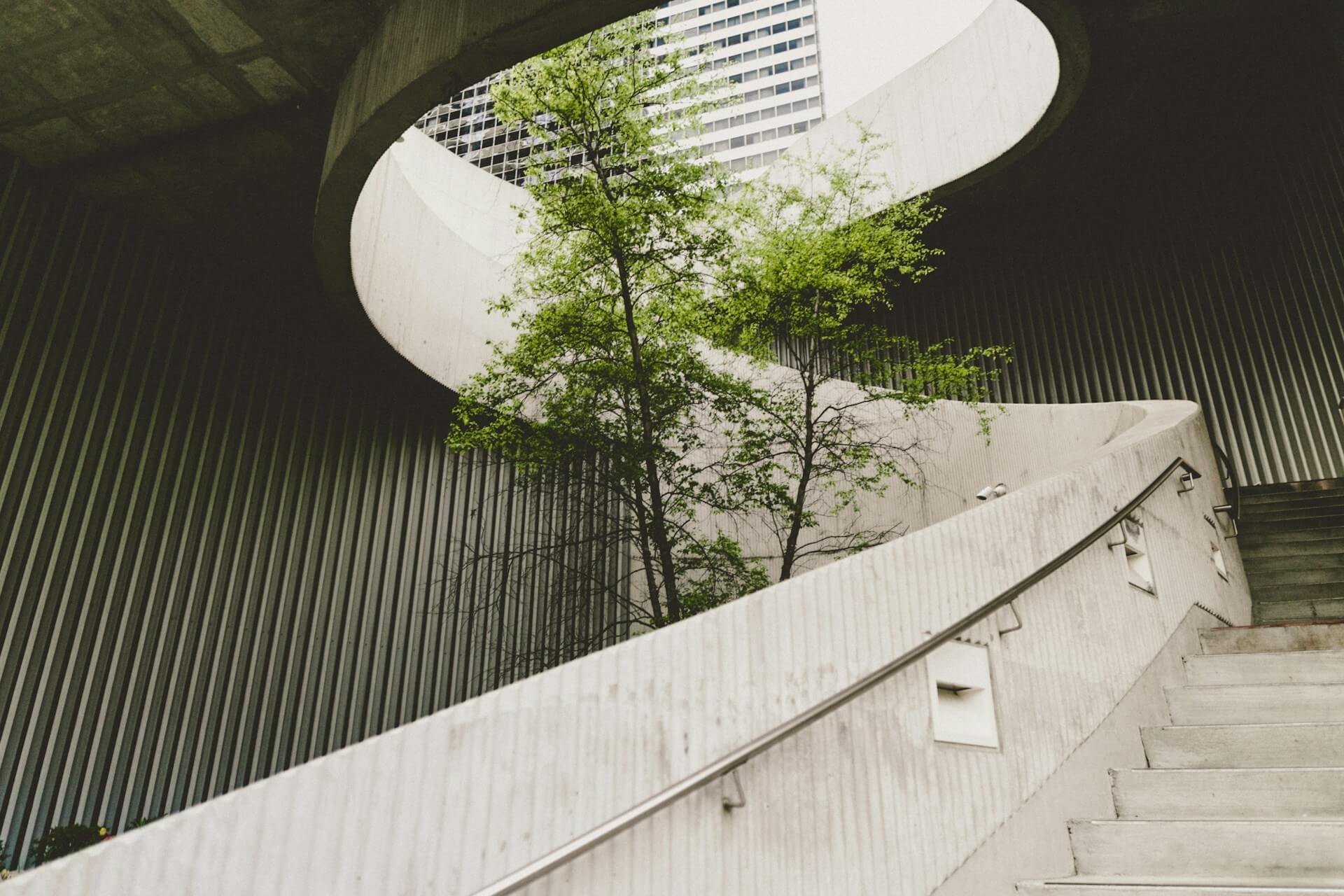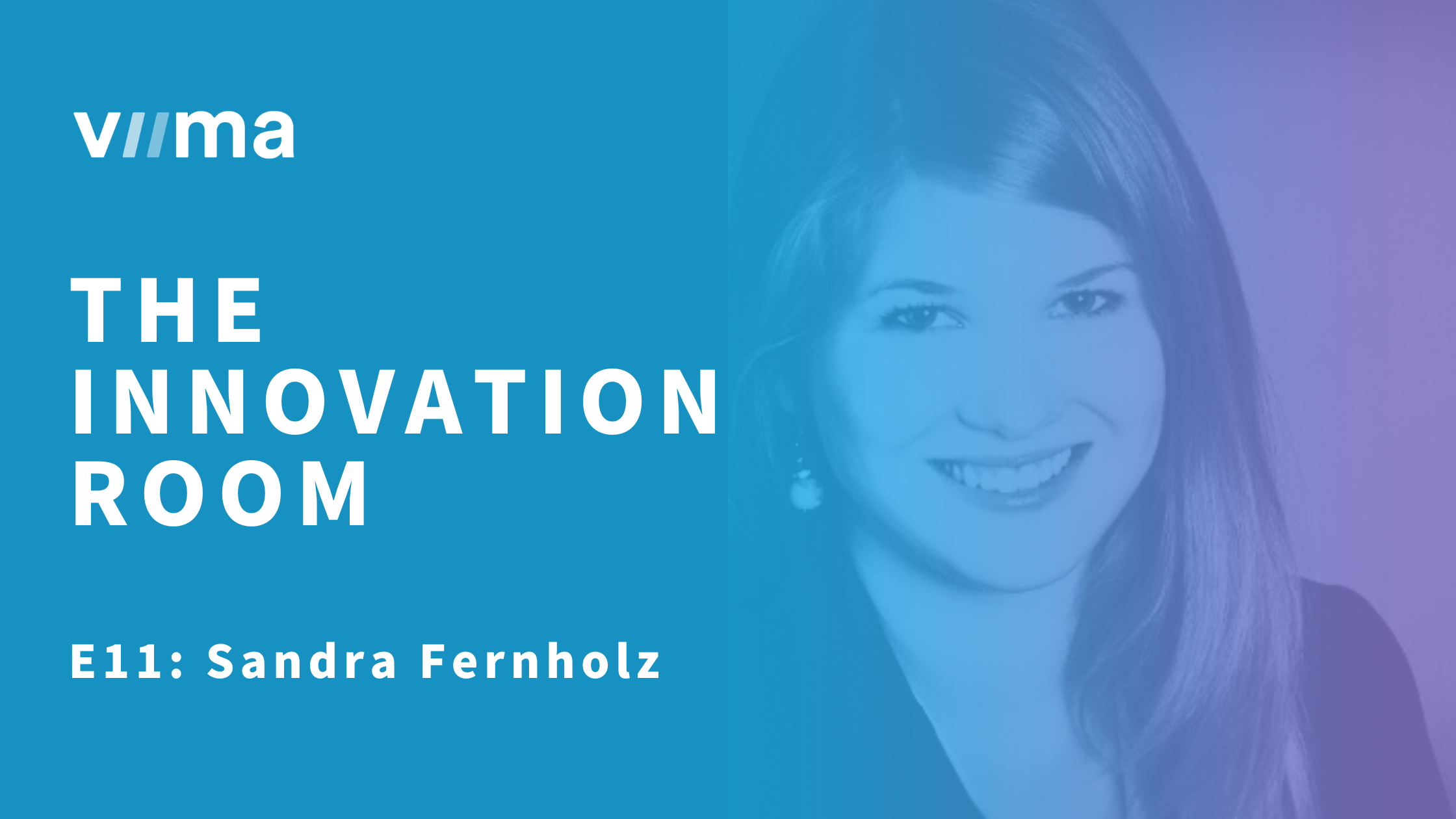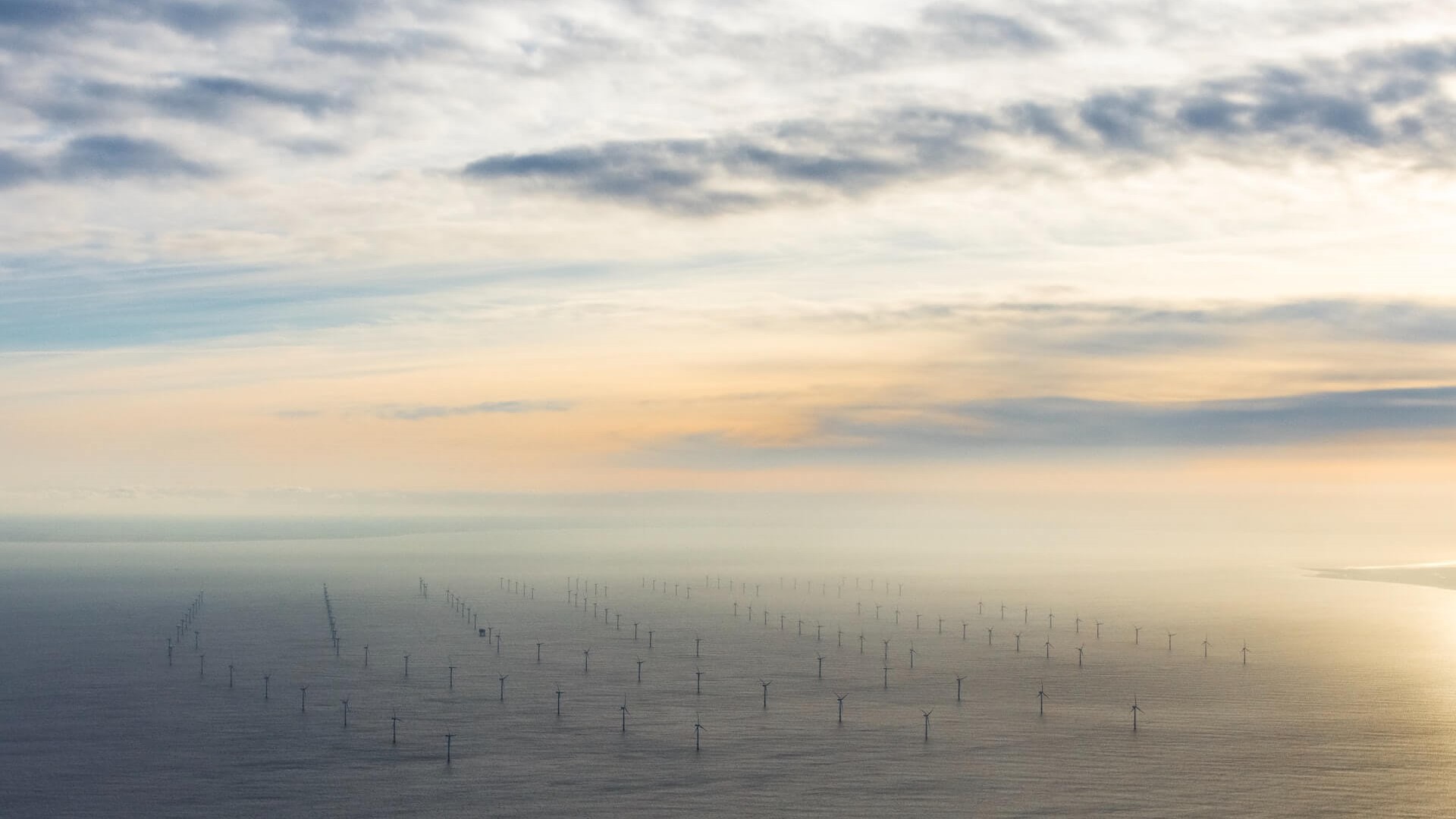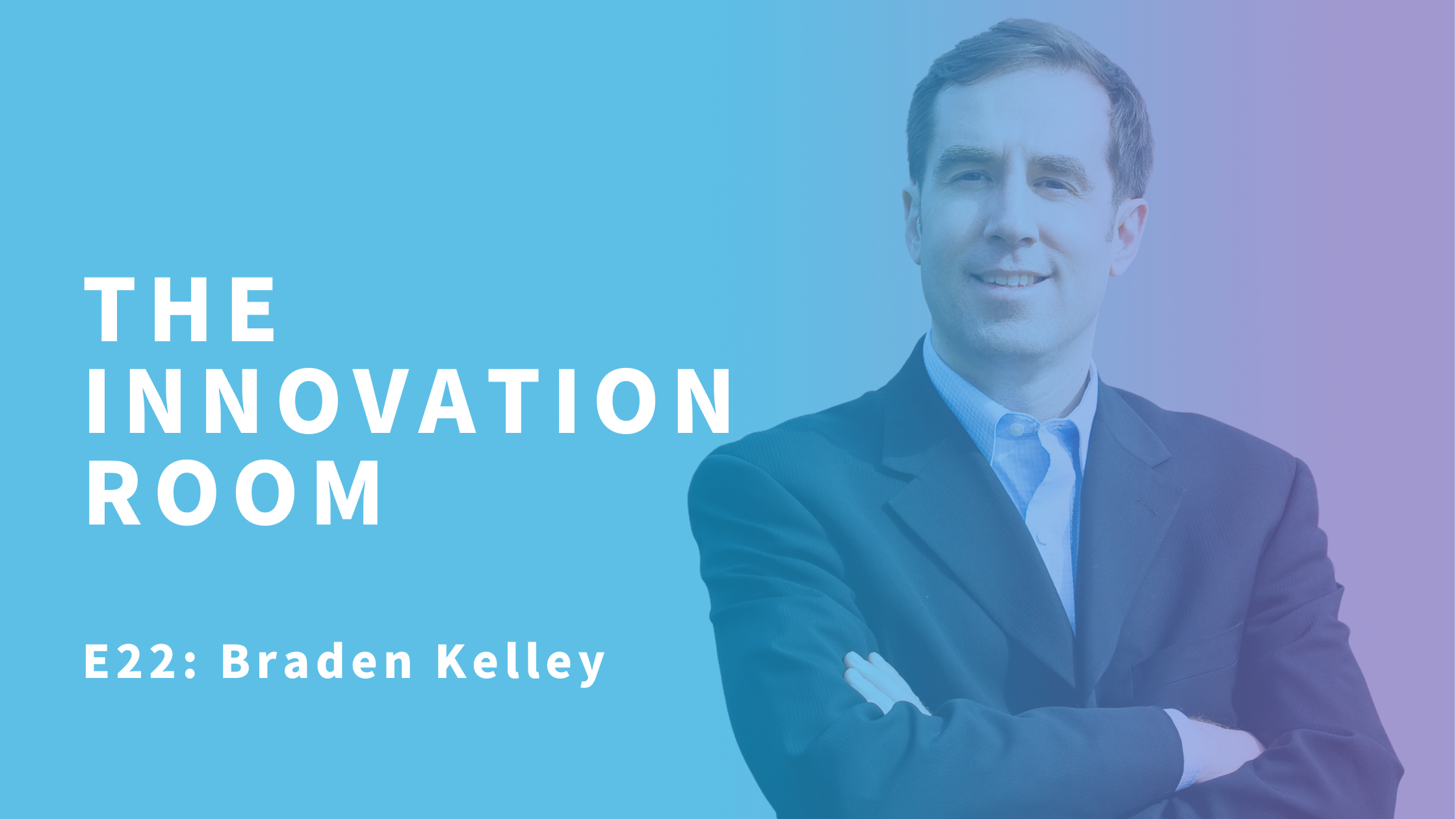Circular Economy with Kati Pallasaho
You can love it or hate it, be passionate about it, or be completely exhausted by it, but the topic of sustainability will not leave the spotlight until we've completely overhauled our work, mindset, and habits.
Understanding the need to educate and inspire, we’ve dedicated this episode of the Innovation Room podcast to the topic of sustainability with a focus on the circular approach.
Time and time again, innovation emerges as a cornerstone for reshaping our approach towards consumption and production, so it is not a far-removed topic for us to cover.
For this conversation, I sat down to talk to Kati Pallasaho, Senior Vice President, Strategy and Sustainability, Lindström Group. Kati is a relentless sustainability advocate. As a professional, she is driving the company towards its ambitious sustainability goals, helping and inspiring people to connect their work to the future of the organization and also the planet.
In the social space, Kati is pushing and promoting the narrative of circularity, tirelessly advocating its need and importance. This passion of hers translates well into her personal life too, as she spends her free time in nature and in her garden where she learns how to grow vegetables
Table of contents
Dainora: From research to consultancy, from a board member to now being a vice president – you had quite a journey in your career. Has it always been all about sustainability? Tell us what led you to this place where you are now.
Kati: I started my career in research and academia, and from there I moved to consulting—specifically, strategy consulting and management consulting. And now I'm at Lindström, working with strategy and sustainability.
I would say that the common denominator in this journey has been strategic change and strategic renewal. That is something that has always interested me, and now I think that the big strategic change that basically all businesses need to go through is the sustainability transformation. I'm super happy that I have the chance to participate in that at Lindström.
Dainora: There are significant misconceptions about the circular economy. For instance, some perceive it as a recycling effort only, while others view it as a commercial approach, with sustainability viewed as a marketing strategy within a business. What's your take on circularity? What does it mean to you?
Kati: Circularity, to me, is a completely new paradigm, a new way of doing business and organizing commercial activities in our society.
In our current operating model, often called the linear economy, we typically take resources from nature, make something out of them, use them, and then when the product that we're using comes to the end of its life cycle – we throw it away.
And there are a lot of different things that underpin this way of doing business. For example, how do we see ourselves as consumers? Do we think that we are here to only consume something, consume the natural resources?
Circularity, however, is a 360-degree change from the linear economy. It's about us as consumers seeing ourselves in a different way; it's about how we take care of the things that we own.
It's also a different way for businesses to operate or corporations to do their business. It's not that much anymore of just selling more stuff. It's also about what kind of services can be provided for the products to be with us for a longer time.
And then at the end of the chain or cycle, it's about what we then do with the end-of-life products and with the raw materials that that we have used - how do we ensure that they then get back to the circle and are not thrown away?
For me, this shift represents a profound change that our society must undergo to mitigate issues such as climate change, conservation of natural resources, and protection of biodiversity.
Dainora: What about the criticism that circularity receives? While there's a lot of discussion about closing the loop in the circular economy concept, it's argued that achieving an infinite loop is impossible due to material depletion. Some critique the idea, suggesting that it could lead to increased consumption, as more materials would need to be input into the cycle.
Kati: I believe that associating circularity with increased consumption stems from this old, linear mindset. I think circularity is a lot more than just consuming more goods; it’s about how we repair items to extend their lifespan. Whether it's electronics, textiles that we are wearing, or any other product. One of the approaches is to make products more durable.
But circularity is also about sharing. I don't think that we need to own all the stuff that we own now. Embracing principles of a sharing economy allows for borrowing or renting items rather than owning them outright. Consider personal cars, which often just sit in parking lots. Is it essential for every family to own a car, or could platforms facilitating car rentals meet our needs more efficiently? So, this is also a completely new way for us to start seeing ownership.
From a business perspective, embracing circularity requires a shift in mindset. Should businesses solely focus on selling more products, or can they generate revenue by offering services that extend product lifespans? This might involve repairing, refurbishing, or providing other value-added services.

Dainora: I agree, the emphasis on extending product lifespans often gets overlooked. Despite the clear benefits of the circular economy, why do we still need to talk about it and push the narrative? Why do we need to challenge the status quo?
Kati: There is a concept called the Earth Overshoot Day. It is a day on which we, during a calendar year, overshoot the consumption of resources that the Earth has to offer to us. For example, the different minerals and metals that we use in electronics, wood that we use in our furniture production, and textile fibers that we get from nature.
So, at the moment, we are consuming resources at a rate equivalent to 1.7 Earths, we are overconsuming nature’s capacity by 70%. This alone should be a wake-up call for us all to critically look at the way that we are using natural resources. Simply put, we cannot continue this way.
So, the consumption of natural resources and what it does to nature and biodiversity is one thing. The other aspect is climate. The more we produce stuff and especially if we're doing it with fossil electricity, fossil energy, the more we also emit greenhouse gas emissions, and that ultimately contributes to global warming.
I think that this should be a critical wake-up call for all of us, a wake-up call to consider: is the linear economy something that we can continue for a very long time?
Dainora: Could you share some insights into how Lindström is transitioning from a linear to a circular model?
Kati: Lindström might not be familiar to all readers, so let me introduce it first.
Lindström Group is a 175-year-old (or young) textile rental service business originating from Finland. We remain family-owned and are headquartered here in Finland.
We operate in 23 countries across Europe and Asia, our primary focus is textile rental services, providing various textiles to our business-to-business customers.
We have been moving towards a circular business model since the 1930s. So, our services entail not only renting the products but also maintaining them. This includes washing, repairing if necessary, and handling delivery logistics for our customers. We deliver clean textiles to our customers and retrieve used ones from their premises, transporting them to our laundromats for washing and repairs before returning them.
Dainora: What was the main motivator for the company to look into upcycling, recycling, and reusing instead of resourcing new raw materials?
Kati: In 2018-2019, as we were working on our strategy for 2025, we anticipated that the overconsumption of textiles would not be sustainable in the long term. Sooner or later, regulations would likely be implemented to put a halt to it.
Today, around 100 billion textiles are produced annually for the 8 billion inhabitants of planet Earth, that’s an overwhelming amount. A few years into our strategy for 2025, the EU began discussing a circular textile strategy. This meant that all textiles within the EU area would need to be repairable, reusable, contain circular materials, and be recyclable.
Back in 2018-2019, we were ahead of the curve in setting ourselves a recycling target: by 2025, we aimed to recycle 100% of our end-of-life textiles. This proactive approach recognized that no textile, whether it is workwear, mats, or hotel textiles, lasts indefinitely, leading to a buildup of waste in our hands.
To address this challenge, we needed to find a solution. For this reason, we set ourselves the target of recycling 100% of our end-of-life textiles by 2025. This goal has led us on an interesting journey, involving the search for local recycling partners in our operating countries and finding solutions for end-of-life workwear and hotel textiles, and then of course, by recycling our end-of-life textiles, we provide precious raw materials for recycling companies to then make products out of them.
We also increased the use of recycled materials in the products we offer to our customers. By 2025, our goal is for 30% of the textiles we purchase and rent to our customers to contain recycled or bio-based materials.
Dainora: Has the company faced any criticism or doubts from customers regarding the use of recycled materials? Has the company encountered any cultural challenges?
Kati: We have learned that for example in China there might be some issues with social acceptance of recycled materials in textiles, together with our recycling partners we would need to overcome them. This is a topic that we have recognized, and we are working toward making recycled materials in textiles more acceptable.
On the other hand, many of our customers in European markets are actually asking for information on whether we exclusively use virgin materials or incorporate recycled content. Our customers are well aware of the environmental burden certain textile fibers might have.
It has been a pleasure to have different encounters and talk to stakeholders about what kind of materials we could provide to them that would then also make their operations more sustainable.
.jpg?width=6016&height=4016&name=chuttersnap-nXJyZLBnyUQ-unsplash%20(1).jpg)
Dainora: Earlier I mentioned there's a discourse focused only on closing the loop, and there might be this technocratic approach to the circular economy. But maybe there is something that the conversation is lacking. What are the other areas within organizations and even society that need to change to truly achieve circularity?
Kati: We talked about the different kinds of materials and what would be the development needed on that front, not only in textiles but also in other types of materials that we are using in our products.
Earlier, I also mentioned consumer behavior, and it's important for us as consumers to challenge the narrative of ownership. We own a lot of things, but do we really actively use all the different products in our closets or homes? For example, how often do you use a screwdriver, or could that be something that you rent when you need it?
As consumers, we need to challenge the narrative of ownership and consider alternative ways to access the products we require. This could involve sharing, leasing, or considering pre-owned, pre-loved items instead of always purchasing new ones.
Another consideration is the approach of different manufacturing businesses. How do we design for durability, for example, to ensure products have as long a lifetime as possible? How do we also design for repairability, reusability, and recyclability? These are critical product design principles.
I also spoke earlier about different business models. Is the corporation solely focused on selling as much as possible, or is it perhaps a combination of selling something and providing additional services like repair? Or maybe it operates with a similar business model to what we offer, where we don't sell but rent. This might unlock a completely new source of revenue for businesses.
Furthermore, when considering materials development and recycling, it may be necessary to form new types of partnerships when a product reaches the end of its lifecycle. I mentioned earlier that locally, in the different countries where we operate, we have searched for partnerships to help us achieve our recycling goals. This is also business for other corporations, as we can provide them with the raw material, which is an important feedstock for their operations.
Additionally, I believe the EU is driving forward this change in circularity, and we also need a push from governments to accelerate the transition to a circular economy. For example, France has been successful in offering incentives to consumers to use more repair services for different kinds of products, thus helping to reduce the number of products that end up in landfills.
So, I'd say there are many different things that need to change, from consumer behavior to the way businesses operate, as well as the different kinds of incentives that governments offer.
Dainora: Recently, I read about a member of parliament in France who proposed imposing a 5-euro levy on fast fashion clothing entering the French market from abroad. It appears that France is emerging as a pioneer in promoting ideas of slower consumption.
Kati: Yes, that remains to be seen, but I think that France has a strong stance on circularity, and I believe it is called the Right to Repair.
Dainora: Drawing from your work, research, or examples, such as Lindström's experiences, where do you see the most significant challenges? Is it government involvement, securing business engagement, or educating consumers? What stands out?
Kati: I think the biggest challenge lies in achieving collaboration among various parties. Getting all stakeholders on board and jointly driving change is the major hurdle. For example, adding more recycled materials to our textile products requires collaboration not only between us and fabric manufacturers but also with our recycling partners. It's a multi-party effort needed to accelerate progress toward circularity.
Moreover, it’s a long journey. When developing new materials and fabrics, we can't compromise on durability. As we operate industrial-scale laundry operations, the fabrics we use in our textile products must maintain their durability. So, we need to test wash over and over again and continue developing to ensure the fabrics we use are truly durable. Increasing the recycled content in fabrics must not compromise the lifetime of the garments. Garments made with recycled materials must maintain longevity comparable to those made with virgin materials to make real progress.
Dainora: And for those businesses or leaders who dismiss this topic, always prioritizing the status quo and solely focused on profit, what would you say is the compelling argument or pitch for why they should consider embracing the circular economy? Why is it relevant for everyone?
Kati: First of all, a circular economy could open up new types of revenue streams. In addition to selling products or equipment, offering services alongside creates new opportunities. We have already seen this change happening in recent years.
Furthermore, companies embracing the concept of taking back and refurbishing products or equipment could open doors to new customer segments. For instance, there are customer segments with a cost-effective mindset who may prefer owning pre-owned or second-hand items rather than purchasing brand-new ones. This approach could lead to new revenue opportunities and streams.
Additionally, we must consider talent attraction and employer branding. At least what we are hearing [at Lindström] in job interviews is that more and more people want to work for sustainable businesses. Therefore, transitioning from a linear to a circular business model can serve as a powerful magnet for talent.
Dainora: Hopefully more people hear and read this and realize, there is a lot of good to the circular approach. With this, we are moving towards the end of our conversation, and I wanted to ask you, what inspires you in your line of work? Are there any books, movies, or other resources you'd recommend to everyone?
Kati: I find my inspiration from encounters with fellow sustainability champions. A recommendation would be to connect with interesting individuals working in sustainability, whether it's by reaching out to them, sitting down for a chat, joining a podcast, or having lunch together. These interactions are always great sources of learning.
Recently, I attended a World Net-Zero Summit and had conversations with fellow sustainability leaders from various industries, including equipment manufacturing, food, and logistics. It was nice to hear about the challenges they face and the solutions they've found, which could also be applicable to our work. Now that we're out of the pandemic, I strongly advocate for people to start meeting in person again and continue learning from each other.

Dainora: Do you ever feel like discussions on the circular economy miss important questions or focus too narrowly? Is there something crucial we haven't talked about that you'd like to bring up?
Kati: A few times I've emphasized the need for a change in mindset, whether at the individual consumer level or within corporate procurement departments.
This shift is critical, moving from a culture of ownership to one of sharing, renting, or leasing. While discussions often revolve around materials and recycling, it's equally important to address the necessary changes in our consumption habits and attitudes.
Moving from the culture of ownership to one of sharing is a critical shift.
Dainora: At the end of each conversation, I like to ask our guests, what is one, main lesson they would like our listeners and readers to take away from our conversation. Would you say that this above is that lesson?
Kati: If I could elaborate a little, I would like to offer three key lessons for different audiences to take away:
Firstly, for all of us as consumers – please, whenever there is a need to make a purchase, consider if you could be buying something that is pre-owned, second-hand, or pre-loved.
Secondly, for the business decision-makers who are listening – please consider if there would be a possibility to rent, share, or lease the assets and products that you need instead of owning.
And then thirdly, for all the sustainability champions who are listening – please keep pushing the circular agenda and challenging the existing business models.
The linear approach to make, use, and waste needs to be challenged so that with the circular economy, we can mitigate climate change and do good for nature and biodiversity.
Dainora: Am I wrong to assume that from what you're saying you are quite an optimist when it comes to this topic?
Kati: I'm optimistic because, based on various trend research and reports published in the last few years, it looks like the circular economy has attained mega-trend status.
However, we are not moving as fast as we should be. Analysis of circularity indicates that we are less than 10% circular, with over 90% of materials still ending up as waste either in landfills or incinerated. We need to take action more swiftly.
Nevertheless, the fact that the circular economy has become a mega-trend tells me that there is a lot more awareness, and people are talking about it. I hope that this will soon move from talk to action.
You can listen to The Innovation Room Podcast on Apple Podcasts, Spotify, and on YouTube.
.png?width=50&height=50&name=Untitled%20design%20(1).png)

.png)

